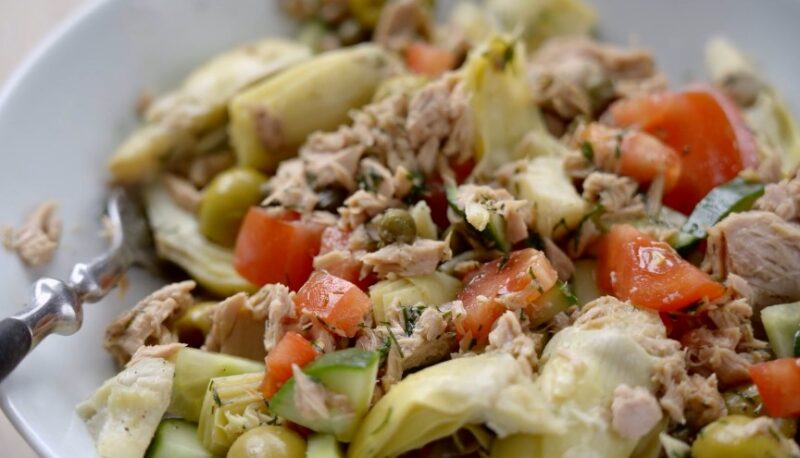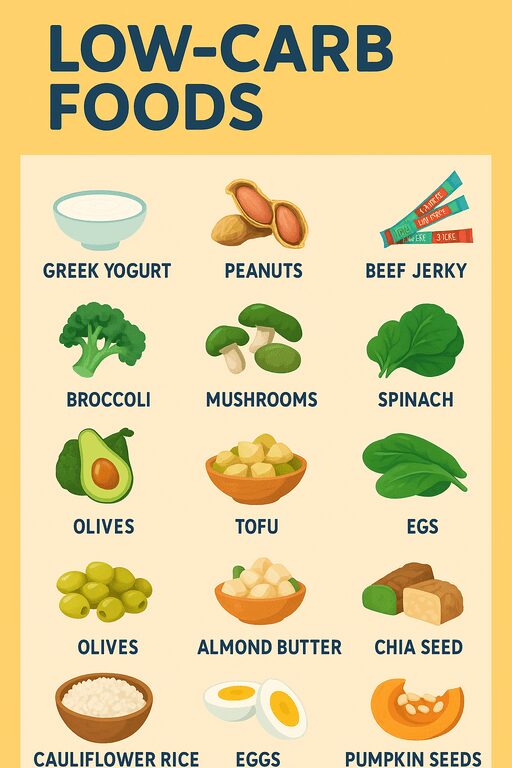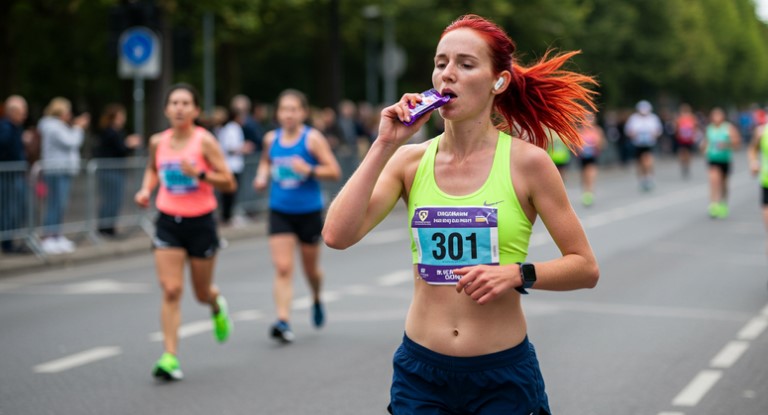Energy management determines performance and endurance in long-distance running.
Many athletes resort to high-carb strategies to keep going, but excessive intake can lead to bloating, crashes, and digestive issues.
The goal here is to find balanced ways to fuel up without drowning in starch and sugar.
Table of Contents
ToggleStrategic Carb Use: Quality and Timing Over Quantity

Finding balance in carbohydrate consumption is key for runners who want to fuel effectively without the uncomfortable side effects of overloading.
Proper timing and smart food choices can deliver energy without unnecessary bulk.
Instead of stuffing in calories, focus on quality, distribution, and how each meal aligns with the body’s digestive cycle.
Pre-Run Carb Management
Timing beats quantity. A heavy-handed approach can lead to bloating, sluggishness, and disrupted performance. Meals eaten 3–4 hours before a run should be focused on digestibility and glycogen provision without stressing the stomach.
Ideal pre-run meal 3–4 hours out might include:
- Plain porridge with honey and banana slices
- Pancakes topped with fruit
- White rice and lean protein like grilled chicken
- A bagel with light spread (avoid seeds or heavy fiber)
Smart choices for the final hour:
- A ripe banana
- Sports drink with electrolytes
- Applesauce pouch
- Energy chews or simple glucose gels
For long races or intense training days, a dinner the night before can be used to front-load glycogen reserves. Stick with foods your body knows well.
Go-to night-before meals:
- Pasta with olive oil and grilled chicken
- White rice with scrambled eggs
- Plain toast with a light spread of nut butter
Carb Intake Guidelines
Carb loading doesn’t require excess. Matching intake to training intensity helps avoid discomfort and ensures fuel is used efficiently.
Recommended intake based on intensity:
- 5–7 grams per kilogram of body weight for moderate endurance efforts
- 8–10 grams per kilogram for higher-intensity or prolonged runs
Distribution tips:
- Split large meals into smaller portions every 3–4 hours
- Avoid combining high-fat or high-fiber foods with large carb servings
- Use liquid options like smoothies to ease digestion on high-carb days
Supplementation as a Carbohydrate Alternative
Not all energy must come through solid food. Supplements offer alternatives for fueling without adding volume or digestive strain. Some options mimic slow-release energy to extend endurance over long periods.
Effective supplement strategies:
- Mixes with maltodextrin and fructose for slow, stable glucose release
- Electrolyte tablets or hypotonic drinks to prevent cramps and dehydration
- Caffeine gum or low-calorie coffee for a final kick without added sugars
Used strategically, supplements can reduce reliance on bulk food while enhancing performance and hydration.
Meal Timing Optimization for Endurance Performance
Fueling becomes effective when it works in sync with the digestive system. Food must be given enough time to process, convert into usable energy, and clear the gut before physical activity begins. An energy-packed plate loses value when it lingers too long in the stomach or triggers discomfort mid-run. Also, avoid running on an empty stomach.
Avoiding a heavy gut at the start line can make the difference between a comfortable stride and a sluggish slog. Instead of focusing only on what is eaten, direct attention to when it’s eaten. The body responds best when fuel arrives at the right moment in the right form.
Timing recommendations for optimal digestion and performance:
- Full meals: Eat 3–4 hours before exercise. Focus on balanced, carb-centered options with moderate protein and minimal fat.
- Light snacks: Consume 30–60 minutes before the session. Stick to simple carbs like a banana, toast with honey, or a small granola bar.
- Liquids or gels: Use 10–15 minutes before the run or during the workout for an energy top-up without overwhelming the digestive system.
Each type of session demands its own approach. High-intensity runs or long distances put more pressure on the gut, so pre-run meals need to be extra calculated. Easy runs, while more forgiving, still require planning for smooth digestion.
Morning workouts pose a challenge due to overnight fasting. In such cases, solid food often doesn’t have enough time to clear.
Liquid carbs like smoothies or diluted sports drinks work well. Those who can tolerate light solids early might go for toast or half a banana.
Evening runners have more flexibility but face a different issue: accumulated food from the day. Heavy lunch or early snacking can leave the stomach unsettled if not spaced properly.
A well-planned meal 3–4 hours prior, followed by a light snack if needed, maintains balance.
Non-Carb Energy Enhancers

Energy support doesn’t always need to focus on starches and sugars. Protein and fat, when used correctly, can fill in gaps without causing digestive trouble.
Smart protein additions:
- Hard-boiled egg alongside morning carbs
- Greek yogurt with honey and fruit
- Small protein smoothie with oats and banana
Fats for long, lower-intensity runs:
- Small handful of almonds
- Half an avocado on toast
- Peanut butter on a banana
In addition to fats and proteins, emerging plant-based supplements like THCV offer a metabolic boost without digestive heaviness.
Rare Cannabinoid Company produces pure THCV oils and gummies specifically marketed for energy, appetite control, and mental focus, attributes particularly valuable to runners in training or on race day.
As with any supplement, these should be tested during training sessions to gauge individual tolerance and benefits.
Training the Gut & Testing Strategies
Gastrointestinal distress ruins long runs. Testing different fuel strategies during training helps condition the body to tolerate food and drink while in motion.
Gut training methods:
- Try energy gels or sports drinks during lower-stakes sessions
- Start with small amounts and gradually increase during workouts
- Keep a food journal to track what works and what doesn’t
Runners who train the gut gain confidence and consistency on race day. Comfort comes through trial, not theory.
Post-Run Recovery Without Carb Dependence

Refueling should support both glycogen restoration and muscle repair. That doesn’t mean piling on carbs unnecessarily. A targeted approach blends moderate carbs with proteins and micronutrients.
Effective post-run meals:
- Grilled chicken, sweet potato, and spinach
- Scrambled eggs with toast and sautéed vegetables
- Protein shake with almond milk, banana, and peanut butter
Timing matters here too. The first 30 minutes after a run offer a recovery window when the body absorbs nutrients most efficiently.
Quick recovery options for that window:
- Protein shake with fruit
- Chocolate milk and a small sandwich
- Hard-boiled egg and a banana
Refueling wisely helps reduce soreness, speed recovery, and prepare for the next session without relying on mountains of pasta.
Summary
Energy strategies should reflect individual needs, not one-size-fits-all carb-loading traditions. Smart timing, careful supplementation, and gut-friendly approaches reduce dependence on massive carb meals.
Trial and error, paired with honest feedback from the body, leads to a fueling plan that supports performance without side effects.
Try different combinations. Adjust for your training load and comfort. Keep what works, discard what doesn’t, and let personal performance be the guide.
Related Posts:
- Should You Run on an Empty Stomach? Pros and Cons Explained
- How Can You Start a Career as a Running Coach?
- 25 Simple Running Motivation Tips To Get You Moving
- Nutrition Tips for Runners - What to Eat Before and…
- Lower Back Pain While Running? Here's What You Need to Know
- How Far Is a Half Marathon? Everything You Need to Know







